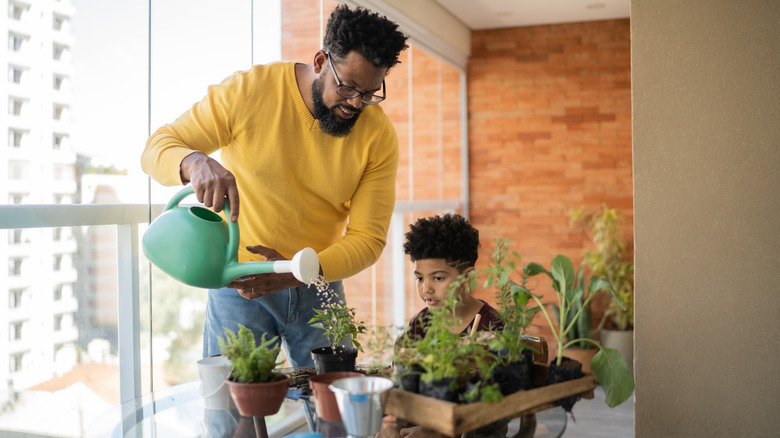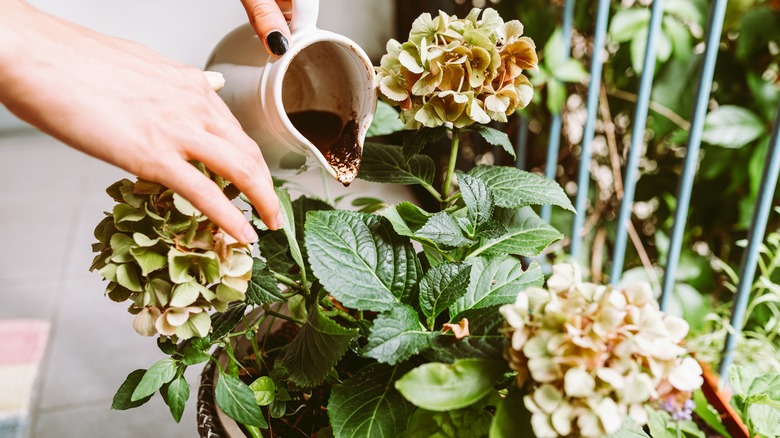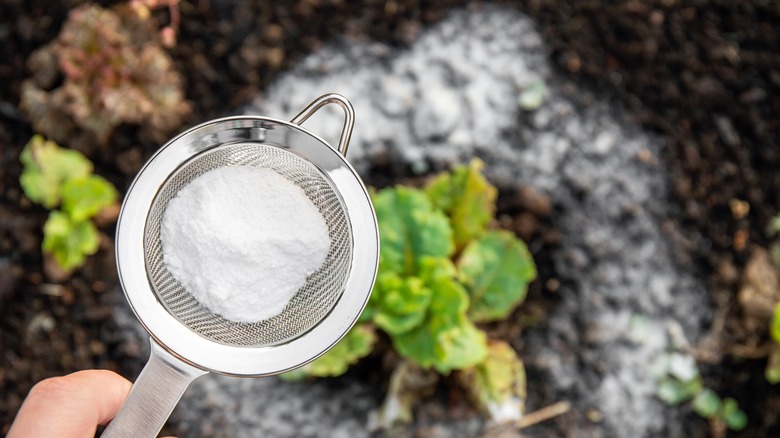Our Master Gardener Weighs In On The Pros And Cons Of TikTok's DIY Club Soda Fertilizer
Your kitchen is probably full of ingredients that can help your greenery flourish, and the internet is full of suggestions for using those items to make your plants grow. TikTok superstar @creative_explained's account is full of videos featuring garden hacks using items most people already have on hand. While I love advice on how to reduce waste and save money while keeping my plants healthy and happy, I think it's important to know exactly how each ingredient is supposed to help.
Commercial fertilizers are developed specifically to have the right balance of nutrients to give plants what they need, but that doesn't mean that making your own is wrong. As a master gardener and obsessive -– I mean, passionate -– houseplant collector and vegetable gardener, I use a combination of store-bought fertilizers and DIY fertilizer teas made from kitchen ingredients on my indoor and outdoor plants. If you are going to make your own plant food, be sure you know what you're feeding your greenery.
Be cautious about using hacks
TikToker @creative_explained has gained a following thanks to his quick home and garden hacks delivered with his high-energy, dynamic personality. Those short videos can be helpful, but they are full of "hows" but not "whys," and when it comes to feeding my plants, I'm not following any advice blindly. In one video, he makes liquid fertilizer using coffee grounds, baking soda, cinnamon, and Epsom salt blended with club soda which he says is "a super powerful homemade mixture rich in nutrients and minerals." He even calls it a "magical potion." When you have a struggling plant, you may be looking for this kind of miracle product to bring it back to life, like the lemon tree he uses as an example.
It's easy to take videos like this at face value, especially if you're just getting started in your houseplant or gardening journey. While I know there are some benefits to the ingredients in this mixture, I'm always cautious when people make bold claims -– like creating a magical potion -– without backing them up with facts. To be fair, facts can be kind of boring and often don't make for exciting social media content. I admire this creator's ability to get people excited about gardening, but let's break down the ingredients discussed so you understand what you're actually feeding your plants — and the possible problems they could cause.
Coffee and cinnamon for plants
First, I'm sorry to say that there is no single magic potion for a sickly plant. Treatment depends entirely on the problem. You can't treat root rot in the same way you would black spot fungus, so it's vital to identify the problem before you use any products. Was that lemon tree not producing because it lacked nutrients? Maybe it wasn't getting enough sun over the winter. Maybe it was just an example for the video. There's no way to know. Now, I do not think this user is lying, these are just the questions we have to ask ourselves when we consider "hacks."
Let's start with coffee grounds, which are full of nitrogen and other trace minerals. These nutrients are vital to the health of a plant, but if they are left on top of the soil, they could attract pests as they decompose and possibly encourage mold to grow. I would opt for liquid coffee or tea to ensure those problems don't happen.
Cinnamon has natural antifungal properties, which may help prevent many issues in the soil. It is sometimes even used as a replacement for rooting hormone because it helps protect the cut end of a plant as it heals while promoting growth. Cinnamon is also a natural mold and pest deterrent. This ingredient is certainly one of my favorites for plants.
Baking soda, Epsom salt, and club soda for plants
Baking soda, also known as sodium bicarbonate, can help inhibit the growth of fungus in the soil, so it mimics one of the properties of cinnamon. If used infrequently in small quantities, a little bit of baking soda shouldn't cause any problems, but the amount suggested in this video is concerning. Using it once a month could create a build-up of salt in your plant's soil. Too much sodium can kill plants.
Not to be confused with table salt, Epsom salt is magnesium sulfate. Even though it has salt in the name, pure Epsom salt does not contain sodium. Like in coffee, the magnesium in this ingredient is the primary beneficial element for plants, but sulfur (sulfate) is acidic. Many plants like slightly acidic soil, but too much of this product can create a pH imbalance, which can stunt or kill plants. I would use Epsom salt sparingly in potted plants or avoid it altogether.
To complete the recipe, club soda is used to bind the ingredients as liquid fertilizer. This fizzy drink contains a trace amount of micronutrients like potassium and calcium, which plants need. It's hard to say if the tiny amount of minerals in club soda is sufficient to help support plants, but it shouldn't hurt. There is also a small amount of sodium in club soda, but unlike baking soda, I don't think it would be enough to build up in the soil.


